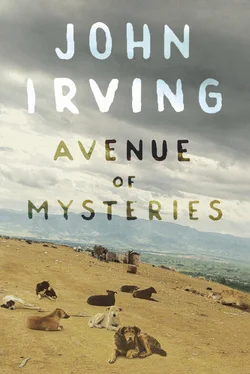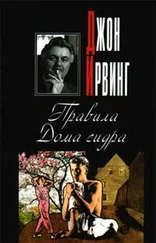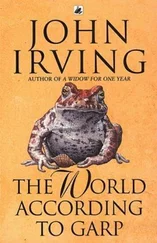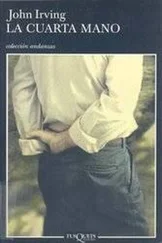“Wouldn’t you cry if you never forgot how your sister was killed by a lion?” Miriam had asked the children at the Encantador. And then Pedro had fallen asleep with his head against Miriam’s breast, as if he had been bewitched.
Juan Diego decided he should talk to Miriam nonstop; if he never let her talk, maybe she wouldn’t bewitch him.
He went on and on about el gringo bueno — not only how the doomed hippie had befriended Lupe and Juan Diego, but the embarrassing business of Juan Diego’s not knowing the good gringo’s name. The Manila American Cemetery and Memorial had beckoned Juan Diego to the Philippines, but Juan Diego told Miriam he had no expectations that he would ever be able to locate the missing father’s actual grave — not among the eleven burial plots, not without knowing the dead father’s name.
“Yet a promise is a promise,” was the way Juan Diego put it to Miriam at the restaurant in the Ayala Center. “I promised the good gringo I would pay his respects to his dad. I imagine the cemetery is pretty overwhelming, but I have to go there — I should at least see it.”
“Don’t see it tomorrow, darling — tomorrow is a Sunday, and not just any Sunday,” Miriam said. (You can see how easily Juan Diego’s decision to talk nonstop was derailed; as so often happened with Miriam and Dorothy, these women knew something he didn’t know.)
Tomorrow, Sunday, was the annual procession known as the Feast of the Black Nazarene. “The thing came from Mexico — a Spanish galleon carried it to Manila from Acapulco. Early 1600s, I’m guessing — I think a bunch of Augustinian friars brought the thing,” Miriam told him.
“A black Nazarene?” Juan Diego asked her.
“Not racially black,” Miriam explained. “It’s a wooden, life-size figure of Jesus Christ, frozen in the act of bearing his cross to Calvary. Maybe it was made from some kind of dark wood, but it wasn’t supposed to be black — it was burned in a fire.”
“It was charred, you mean?” Juan Diego asked her.
“It was burned at least three times, the first time in a fire on board the Spanish galleon. The thing arrived charred, but there were two more fires after the Black Nazarene got to Manila. Quiapo Church was twice destroyed by fire — in the eighteenth century and in the 1920s,” Miriam said. “And there were two earthquakes in Manila — one in the seventeenth century, one in the nineteenth. The Church makes a big deal about the Black Nazarene’s ‘surviving’ three fires and two earthquakes, and the thing survived the Liberation of Manila in 1945—one of the worst bombings in the Pacific Theater of World War Two, by the way. But what’s the big deal about a wooden figure that ‘survives’—a wooden figure can’t die, can it? The thing just got burned a few times, and it turned blacker!” was the way Miriam put it. “The Black Nazarene was shot once, too — in the cheek, I think. The gun incident was fairly recent — in the 1990s,” Miriam said. “As if Christ didn’t suffer enough, on the way to Calvary, the Black Nazarene has ‘survived’ six catastrophes — both the natural and the unnatural kind. Believe me,” Miriam said suddenly to Juan Diego, “you don’t want to leave the hotel tomorrow. Manila is a mess when the Black Nazarene’s devotees are having their crazy procession.”
“There are thousands of marchers?” Juan Diego asked Miriam.
“No, millions, ” Miriam told him. “And many of them believe that touching the Black Nazarene will heal them of whatever ails them. Lots of people get hurt in the procession. There are male devotees of the Black Nazarene who call themselves Hijos del Señor Nazareno—‘Sons of the Lord Nazarene’—and their devotion to the Catholic faith causes them to ‘identify,’ as they put it, with the Passion of Christ. Maybe the morons want to suffer as much as Jesus suffered,” Miriam said; the way she shrugged gave Juan Diego a chill. “Who knows what true believers like that want?”
“Maybe I’ll go to the cemetery on Monday, ” Juan Diego suggested.
“Manila will be a mess on Monday — it takes them a day to clean up the streets, and all the hospitals are still dealing with the injured,” Miriam said. “Go Tuesday — the afternoon is best. The most fanatical people do everything as early in the morning as they’re allowed — don’t go in the morning,” Miriam told him.
“Okay,” Juan Diego said. Just listening to Miriam made him feel as tired as he might have felt if he’d marched in the Black Nazarene procession, suffering the inevitable crowd injuries and dehydration. Yet as tired as he was, Juan Diego doubted what Miriam had told him. Her voice was always so authoritative, but this time what she said seemed exaggerated, even untrue. It was Juan Diego’s impression that Manila was huge. Could a religious procession in Quiapo really affect the Makati area?
Juan Diego drank too much San Miguel beer and ate something curious; any number of things could have been the cause of his not feeling well. He suspected the Peking duck lumpia. (Why did they put duck in a spring roll?) And Juan Diego didn’t know that lechon kawali was deep-fried pork belly, not until Miriam informed him; the sausage served with bagoong mayonnaise took him by surprise, too. Later, Miriam told him the mayonnaise was made with that fermented-fish condiment — the stuff Juan Diego thought gave him indigestion or heartburn.
In truth, it may not have been the Filipino food (or too much San Miguel beer) that upset his stomach and made him feel sick. The all-too-familiar craziness of the fervent followers of the Black Nazarene upset him. Of course the burned Jesus and his charred-black cross had come from Mexico ! Juan Diego was thinking, as he and Miriam navigated the escalators in the vast mall of the Ayala Center — as they rode the elevator, up and up, to their suite in the Ascott.
Once again, Juan Diego almost didn’t notice how his limp seemed to go away when he was walking anywhere with Miriam or Dorothy. And Clark French was assailing him with one text message after another. Poor Leslie had been texting Clark; she’d wanted Clark to know his former teacher was “in the clutches of a literary stalker.”
Juan Diego didn’t know there were literary stalkers; he doubted that Leslie (a writing student ) was besieged by them, but she’d told Clark that Juan Diego had been seduced by a “groupie who preys on writers.” (Clark persisted in calling Dorothy just plain “D.”) Leslie had told Clark that Dorothy was a “woman of possibly satanic intentions.” The satanic word never failed to excite Clark.
The reason there were so many text messages from Clark was that Juan Diego had turned off his cell phone before the flight from Laoag to Manila; not until he was leaving the restaurant with Miriam did he remember to turn it back on. By then, Clark French’s imagination had taken a fearful and protective turn.
“Are you all right?” Clark’s most recent text message began. “What if D. is satanic? I’ve met Miriam — I thought she was satanic!”
Juan Diego saw he’d missed a text message from Bienvenido, too. It was true that Clark French had made most of the arrangements for Juan Diego in Manila, but Bienvenido knew that Mr. French’s former teacher was back in town and that he had changed hotels. Bienvenido didn’t exactly contradict Miriam’s warnings about Sunday, but he wasn’t as adamant.
“Best to lie low tomorrow, due to crowds attending the Black Nazarene event — at least avoid any proximity to the procession routes,” Bienvenido texted him. “I’ll be your driver Monday, for the onstage interview with Mr. French and the dinner afterward.”
Читать дальше












